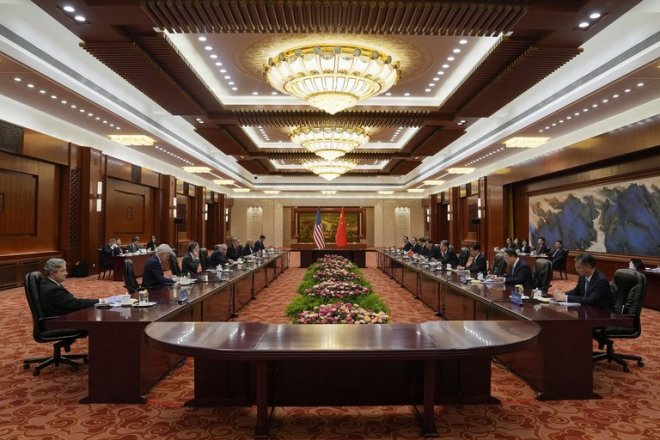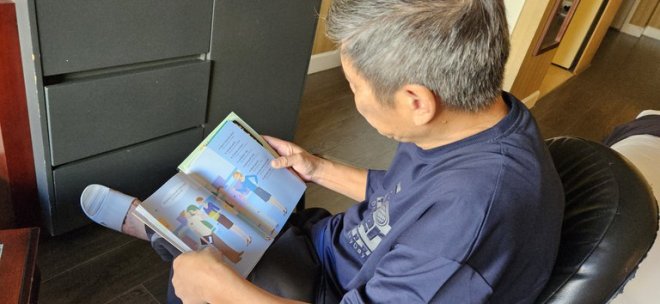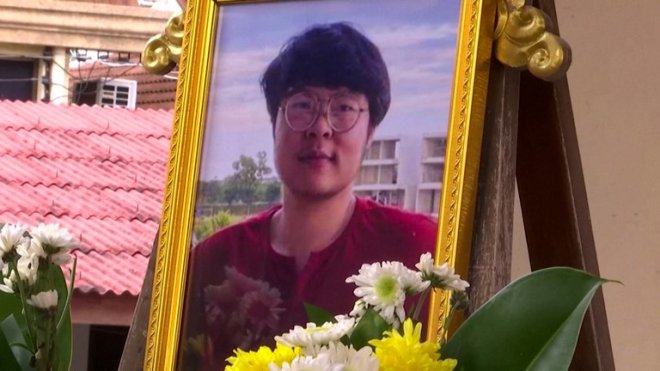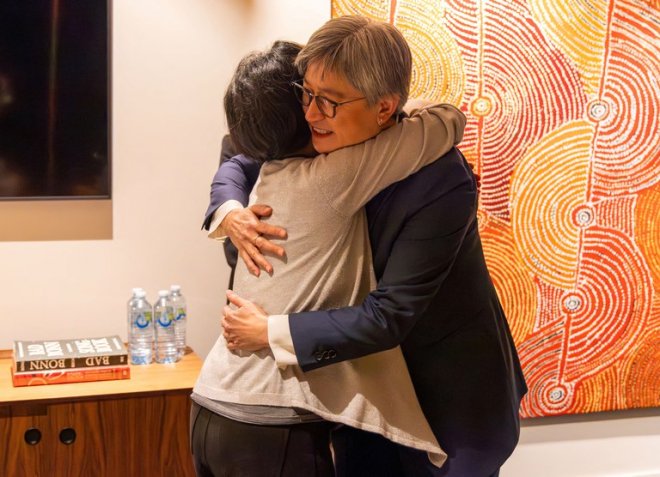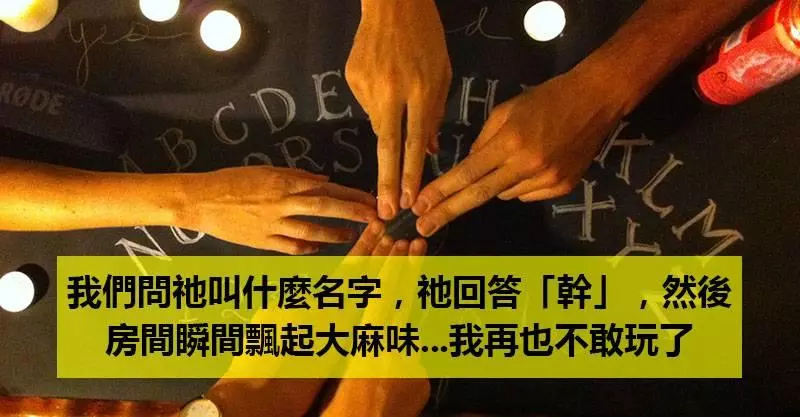‘Mysterious’ Uyghur artist re-establishes himself in exile in Norway
Celebrated Uyghur artist Ekrem Imin has rebuilt his life – and his career – in exile in the Norwegian city of Sandvika.Back home, Ekrem’s artwork was displayed in major restaurants and hotels, and TV crews regularly interviewed him. In Norway, he’s made his mark by leaving his artwork, anonymously, along the banks of a stream running through the city near Oslo.
“He is the mysterious artist,” read a headline published in Norway’s Budstikka newspaper in October 2020. The article, which named Ekrem as the painter of stones along the stream, brought further attention to the artwork and to the artist behind them.
Depictions of traditional Uyghur life cover the walls of Ekrem’s studio inside a local museum. Musicians, sand dunes, architecture, clothing – many of these portrayals are drawn on dried gourds or carved on deadwood.
It’s a treasure trove of Uyghur creative tradition. And it’s become an improbable attraction in Sandvika, which was once the subject of a series of paintings by French artist Claude Monet.
New start in Norway
Like many other Uyghurs who have gained a firm foothold abroad, Ekrem had a near miss. Eight years ago, suffering severe pancreatitis, and seeking the best treatment available to him, he got on a plane to Norway.
At the time, he was a prominent member of the artist establishment in Urumqi, the capital of Xinjiang Uyghur Autonomous Region in far-western China.
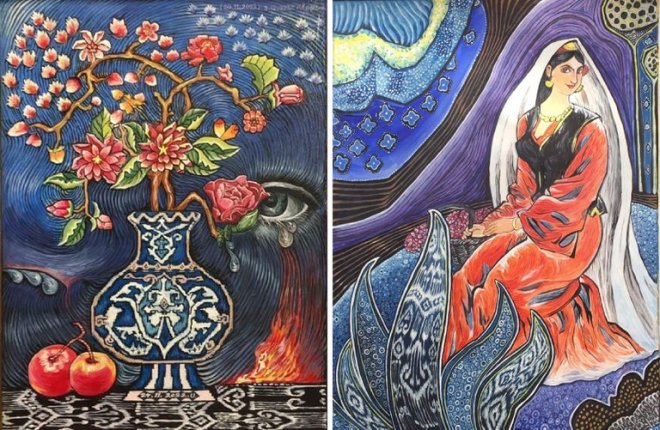 Left: “Tear for Fire” by Ekper Imin is dedicated to the Uyghurs who died in the apartment fire in Urumqi on Nov. 24, 2023. Right: The “Beauty of Uyghur Etles” is a tribute to the classic Uyghur fabric for use for women’s dresses. Credit: Handout photo
Left: “Tear for Fire” by Ekper Imin is dedicated to the Uyghurs who died in the apartment fire in Urumqi on Nov. 24, 2023. Right: The “Beauty of Uyghur Etles” is a tribute to the classic Uyghur fabric for use for women’s dresses. Credit: Handout photo“A doctor in Urumqi told me: if you get on that plane, you’ll die over there,” Ekrem told Radio Free Asia by phone.
But he recuperated in Norway. In the meantime, China was building mass internment camps and launching its unprecedented campaign against Uyghurs and other minorities. Artists began to disappear. After his full recovery, Ekrem decided to stay.
Separated from his native land, Ekrem kept to the simple principles he’d learned there. He’d keep on contributing with the best tools he had: his art.
Bringing life to lifeless objects
Ekrem was born in Karamay, an oil town in northern Xinjiang. He graduated from the Chinese Academy of Fine Art in 1986. Following graduation, he worked as arts editor at Xinjiang Pictorial magazine. Starting in the 2000s, he developed his method of making intricate designs and folk scenes on a very traditional medium: dried gourds, or qapaq in Uyghur. Gourd vessels were once ubiquitous in Uyghur homes, and are still commonly used in rural areas.
In 2003, he brought the gourds to an international arts exhibition in Kuala Lumpur, where they were very well-received. From there, his work started to gain broader recognition.
Ekrem says his work is about bringing life to lifeless objects.
“In my hands, even stones and deadwood become beautiful,” he says. Although he was previously known for his gourds, he says decorating stones is also a deeply Uyghur practice, and not his own invention: “Actually, our ancestors started drawing on stones 2,000 to 3,000 years ago.”
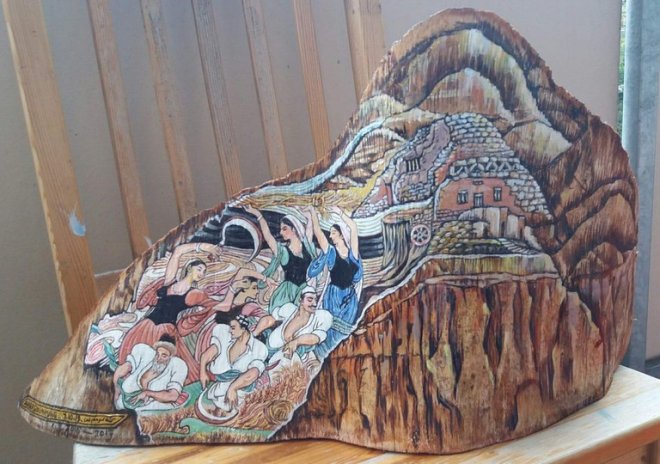 “The Legend of Tengri-Tagh Mountain” by Ekper Imin looks at the Uyghur people’s love for life, nature and freedom. Credit: Handout photo
“The Legend of Tengri-Tagh Mountain” by Ekper Imin looks at the Uyghur people’s love for life, nature and freedom. Credit: Handout photoRecently, Ekrem has produced watercolors portraying difficult scenes from today’s Xinjiang. He depicted an apartment fire in Urumqi last November, which claimed 10 lives and sparked protests against Covid-19 restrictions across China.
He also painted a Uyghur woman who, in front of news cameras, fearlessly scolded a row of People’s Armed Police during the deadly 2009 Urumqi unrest. The identity of the “girl in the blue T-shirt,” as she is known in Uyghur, as well as what happened to her, remain unknown. “By depicting her, I expressed my love for this heroic girl who devoted herself to her people,” Ekrem said.
His artwork has been selected for numerous shows in Norway and other countries in Europe, as well as a solo show in a Sandvika gallery last year. Throughout his self-reinvention, he says he has drawn inspiration from his connection to, and abiding love for, his homeland, its culture and identity.
Ekrem credits his success both to his love for the folkways of his homeland, and to his drive to give back to the country that has adopted him.
“We must not become people who only know how to take from society, and not how to contribute,” Ekrem said.
[圖擷取自網路,如有疑問請私訊]
|
本篇 |
不想錯過? 請追蹤FB專頁! |
| 喜歡這篇嗎?快分享吧! |
相關文章
AsianNewsCast









